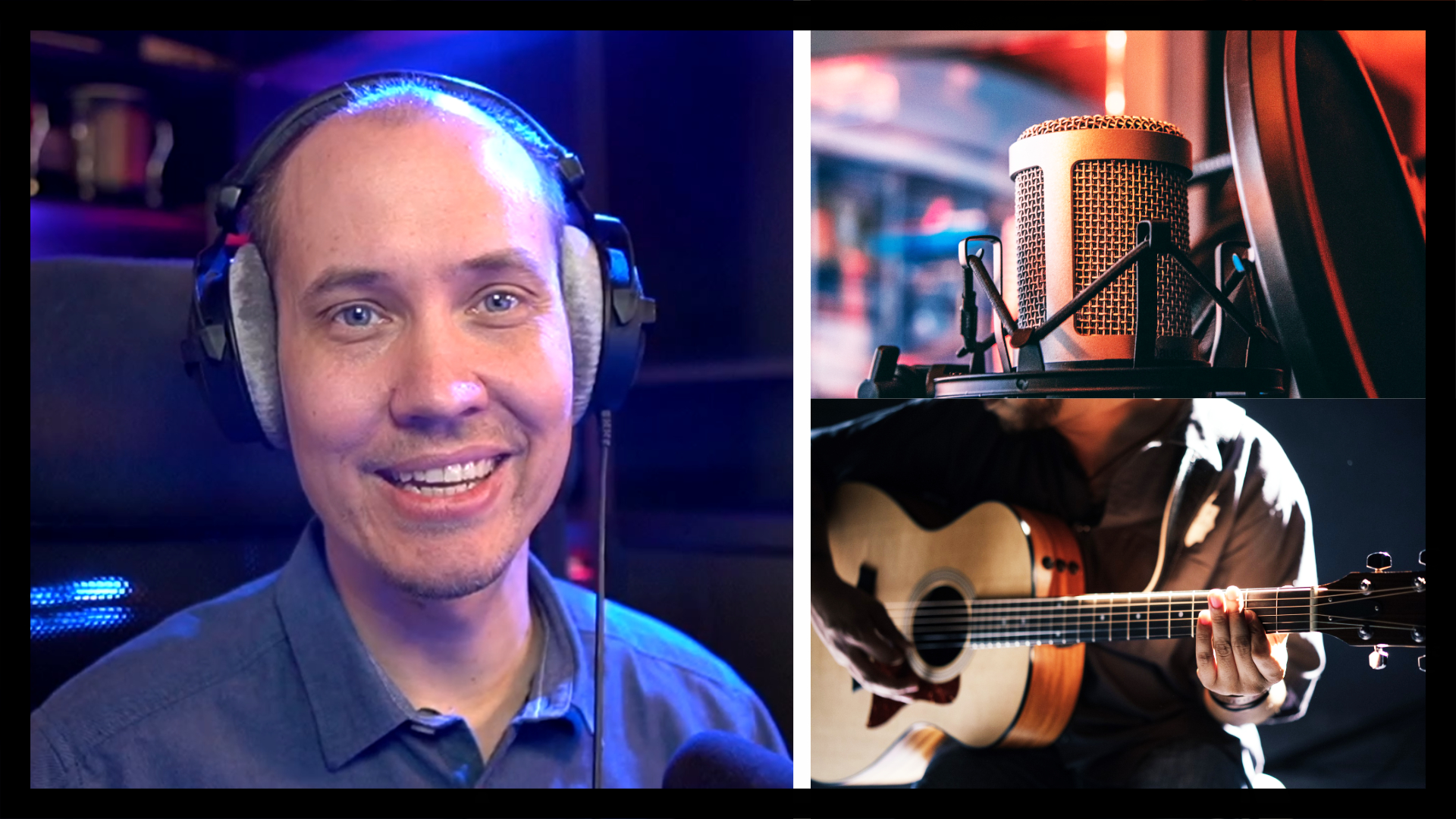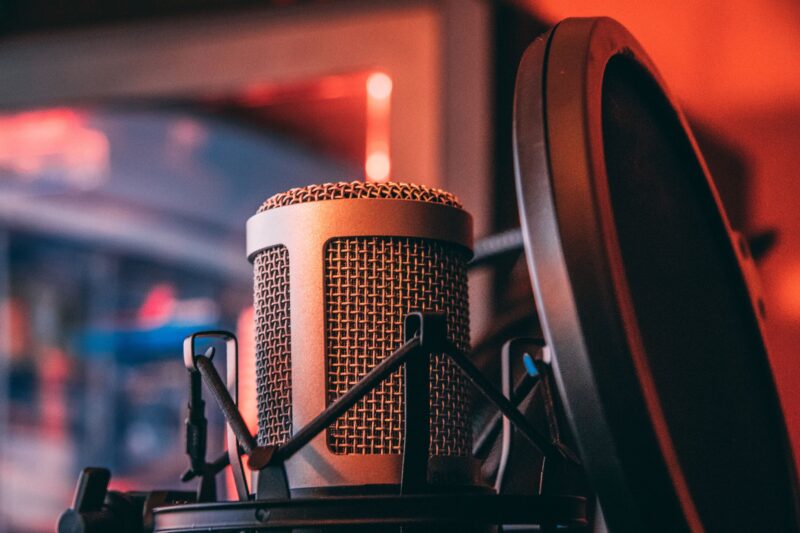 Welcome! In this class you will learn how to do brainstorming sessions to come up with new ideas for your music. I will share my top tips and tricks that I have learned from 25 years of making music.
Welcome! In this class you will learn how to do brainstorming sessions to come up with new ideas for your music. I will share my top tips and tricks that I have learned from 25 years of making music.
You will learn about: inspiration boosters, creative flow, brainstorming tools etc. The goal is to make you get into the mood and flow of music making, and to generate the seeds that will then grow into an amazing final piece of music.
Are you ready? Let’s start learning!
Inspiration Boosters
Before you can start creating new music, you need to find your inspiration. I have several tricks I have used over the years to get truly inspired. And when you feel that inspiration kicking in, you will get all kinds of musical ideas coming to you in no time. Here are my favorite inspiration boosters:
Visual Inspiration
 Images and video can be a great source of inspiration before you start brainstorming new music. You can use any images, graphics or video you want to get the visual atmosphere you want for your new music. I prefer using high resolution images, like for example desktop wallpaper graphics. You can find images in any genre, topic and style. Simply find one you like to use as your visual inspiration cue, and truly focus on the atmosphere it portraits, and the mood and emotions it triggers. Then you can start playing whatever comes to your mind, on any instrument you like.
Images and video can be a great source of inspiration before you start brainstorming new music. You can use any images, graphics or video you want to get the visual atmosphere you want for your new music. I prefer using high resolution images, like for example desktop wallpaper graphics. You can find images in any genre, topic and style. Simply find one you like to use as your visual inspiration cue, and truly focus on the atmosphere it portraits, and the mood and emotions it triggers. Then you can start playing whatever comes to your mind, on any instrument you like.
Music Mood Kickstarters
Listening to any music just before you start brainstorming is a great way to kickstart your inspiration. I recommend using any type of music that has the kind of mood and energy you are going, but it does not have to be in the same genre and style of music. Focus on the atmosphere and emotional impact of the music. Sometimes it can also help to jam along to the music on any instrument. Then stop the music, and immediately start improvising music anything new yourself. It may sound similar, or it may be completely different, just let the creative spark ignite all those new ideas you will get.
Harmonic Anchor
This is a term I use personally, but most often it is called a “drone sound”, or “pedal tone”. It is simply one single low bass note that is sustained for a very long time. A good starting point is to use some kind of pad sound for this. Then you write a long note in any key, for example a low A for 8 bars. If you want to you can even set your music production software to loop those 8 bars forever. This drone sound will act as a harmonic anchor and atmosphere creator, which in turn will give you new ideas for melodies, riffs, themes, and even chord progressions. It almost feel like magic, that’s how great it is for boosting your inspiration and creative spark.
Creative Flow
To find that elusive creative flow of music making is so important, and I have found that the best way to do this after you have found your inspiration…is to keep things simple, remove restrictions, and focus on being as free as you can in your musical expression when you start brainstorming new musical ideas. Here are my favorite creative flow tricks:
The Power of Your Voice
 Even if you are a skilled musician on any instrument, there is one instrument that has the most expressive range and creative freedom of all. Your voice. You can use your voice to come up with new musical ideas, from melodies, to riffs, and even a percussive groove. And I am not talking about singing or lyrics here. I am talking about everything from humming melodies to beat-boxing a beat, or even a mix of both. I recommend that you mix a range of syllables when using your voice to come up with musical ideas. A good starting point is the classic: la-la, na-na and du-du. But you can hum anything really, even weird sounds. And you can even add expression and emotion into your humming. For example: gliding between some notes, adding vibrato, accents, crescendos and dynamic contrast etc. I always have an audio track in my music production software dedicated for my voice , which I use to record musical ideas in the most expressive and free way there is.
Even if you are a skilled musician on any instrument, there is one instrument that has the most expressive range and creative freedom of all. Your voice. You can use your voice to come up with new musical ideas, from melodies, to riffs, and even a percussive groove. And I am not talking about singing or lyrics here. I am talking about everything from humming melodies to beat-boxing a beat, or even a mix of both. I recommend that you mix a range of syllables when using your voice to come up with musical ideas. A good starting point is the classic: la-la, na-na and du-du. But you can hum anything really, even weird sounds. And you can even add expression and emotion into your humming. For example: gliding between some notes, adding vibrato, accents, crescendos and dynamic contrast etc. I always have an audio track in my music production software dedicated for my voice , which I use to record musical ideas in the most expressive and free way there is.
Switching Instruments
Every instrument in the world has its own tone, mood, style and character. Not only in the way it sounds, but also how you play it. From pressing keys on a piano, to plucking strings on a guitar, to blowing air into a flute. This is why you can get completely different ideas by simply switching which instrument you use for brainstorming in your music making session. You will get the most benefit from this technique if you actually play real instruments, but even if you only can play a MIDI keyboard, you can use the “instrument switching technique” by simply changing what sound or preset you play inside your music software.
Focus on the Essence
All music has something within it that feels like the very core essence that makes you feel it and remember it. This is usually a melody or riff, but it can even be a cool bass line or any type of hook that catches the listeners attention. When you brainstorm new music, I would encourage you to come up with ideas like that. Musical ideas that creates the essence of a new track. A great way to do this is to keep it very simple. Sketch ideas on one instrument only, or use your voice if you prefer. This core idea might even feel too simple on its own. But remember, that it is only the seed that will later grow into a big strong tree that is your final music production. Backed up with chords and harmony, layering instruments in the arrangement and so on. So please, focus on finding the essence of your new song first. However small and simple that seed may be.
Brainstorming Tools
There are of course a lot of tools you can use in your music brainstorming sessions. However, in order to stay in that creative flow you want to be in when making music, I suggest you don’t use too many of them. And try to only use tools that are super quick and easy to use, since you want to avoid any technical frustrations when brainstorming music ideas. Here are my personal favorite brainstorming tools that I can highly recommend:
Audio Recording Apps
When I started making music back in the late 90s, I used to have an analog tape recorder which I used to record musical ideas. But these days you have something even better, and simpler, your smartphone. Try using a super simple audio recording app, and hum, sing or beatbox in any ideas you come up with. The best part is that most of us basically always our smartphone with us, so you can pick it up and record an idea anywhere. I have done it on my daily walks, and even in the supermarket. Then you can transfer that audio file into your music production software once you are back in your studio again.
Chord Progression Software
There are apps that can help you come up with chord progressions, both on your smartphone, but also on your computer. My favorite is a software plugin that you install into your music productions software, called Scaler. A nice app on your smartphone is called “Suggester”. The main point here is to use it as a starting point to try out different chord progressions, that you can then jam to on your instrument, or hum or sing to if you prefer. And if you don’t like it, it is often very easy to change out the chord progression to something else.
MIDI Sketching Stack
Something I like to do is to have a group of instruments in a folder at the top of my music recording software, that I use for sketching and brainstorming. There are two advantages of this that I use. The first being that I can have various types of instruments in that track, and very quickly use the “Instrument Switching” technique that you already learned about, to get a new tone and character that sparks different ideas. The second advantage is that this makes it very quick and easy to layer various instruments in order to create a new overall sound. This sound will also feel bigger and more immersive. When you have a deep and powerful stack of instruments like this, I find that you get a huge motivation boost in your music making and sketching process. And you can try different stacks, to get new ideas.
Action – Your own Brainstorming Session
Congratulations! You have now learned all my favorite tips and tricks for boosting your inspiration, creative flow and efficiency when you sketch and brainstorm new music. Now it is time for you to take action, and learn by doing. Do a 1 hour brainstorming session to come up with the essence, the seed, of a new music composition. Use any of the tips and techniques you have learned in this class, or any other cool tricks you know yourself. But the the final result should be a short sketch of the absolute essence to a new music composition. I recommend keeping it to a main melody or riff, plus a chord progression and a bass line. Perhaps a simple drum beat if you have time and that is essential to get the core idea across. And keep it short, 16 bars of music or so. Good luck, and have fun as you start using the power of creative flow and speed, when doing a brainstorming session to come up with the seed of a new track.
